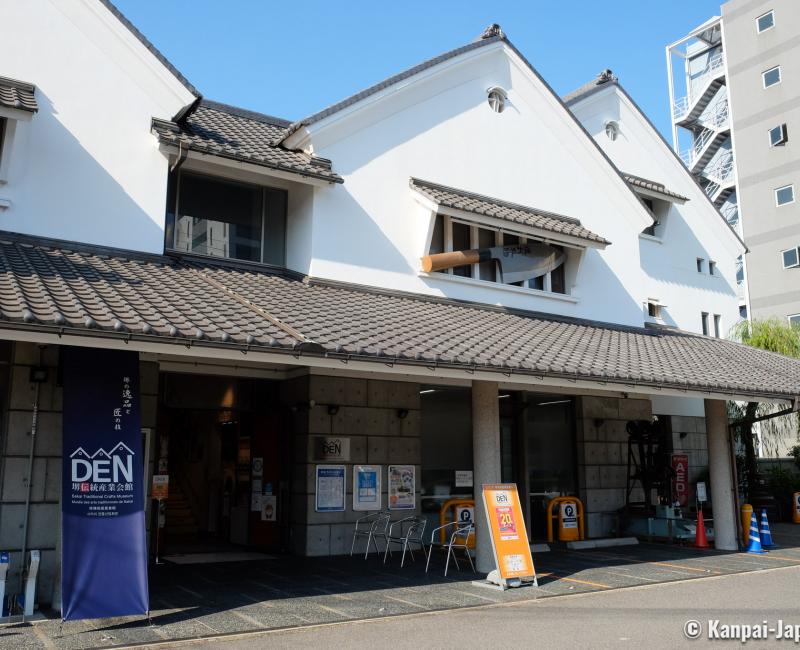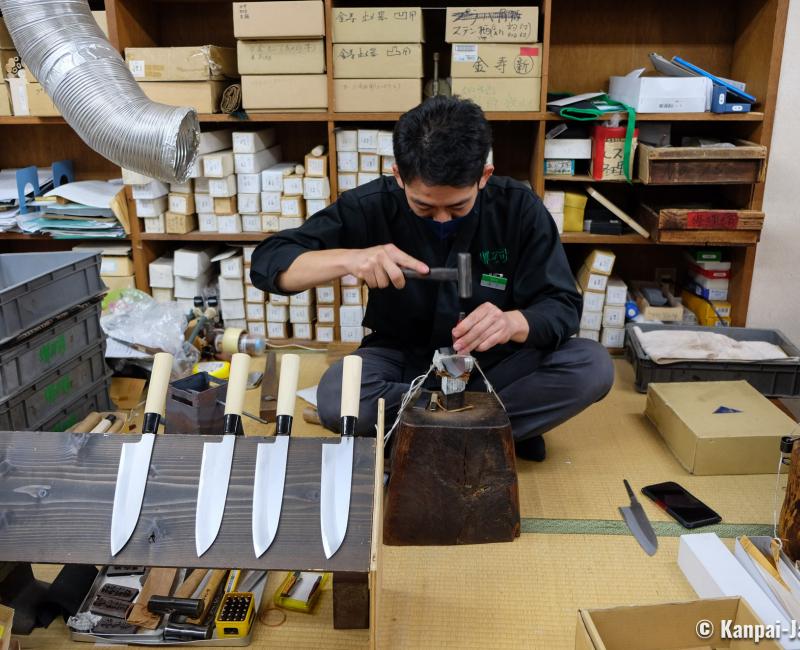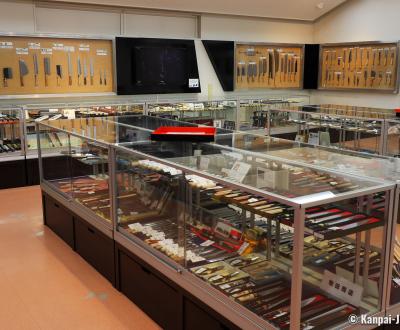Sakai City Traditional Crafts Museum
Japanese Knives in the Spotlight
Sakai City Traditional Crafts Museum is located in the south of Osaka, in the Kansai area. It focuses on Sakai City traditional craftsmanship, and especially on the Japanese cutting tools. Beyond the simple exhibition, the museum also features workshop sessions, as well as a shop to purchase artisanal products crafted in the purest Japanese tradition.
Of a quick and easy access from Osaka, the suburban town of Sakai is keen on preserving its rich craft heritage. Among its most renowned traditional skills are:
- Cutlery: Sakai is largely known as the birthplace of Japanese blades, and many cooking chefs come here to find the best Japanese knives;
- Bicycle: Sakai’s blacksmiths, who had developed a great mastering of metalworking including in the making of rifles, used their expertise to make bicycles from the early 20th century;
- Dantsu rugs: hand-made since the middle of the Edo period (1603 – 1868);
- Koinobori 🎏 carps: the symbols of the boys’ day in May, that are still completely made and painted by hand; and,
- Kombu kelp: after arriving by sea from Hokkaido, it is dried and finely shredded with a specific knife (Oboro kombu) in Sakai.
The Traditional Crafts Museum showcases Sakai’s whole craftsmanship. Several artisans of the city, who gathered as a collective, display in turn their products and give a demonstration of their know-how. In the same place, it is thus possible to:
- Learn about Sakai’s artisanal history,
- Meet local artisans and discover their trade,
- Purchase directly an artisanal product certified by the museum.
In 2020, the sanitary crisis did not affect the local artisans’ conviction and they continued the promotion of their traditional craft. The institution kept its doors opened to the public, within the sanitary framework put in place by Osaka prefecture regarding the protection of visitors and prevention measures against Covid-19 🦠.

Museum of Japanese knives
The museum is particularly recommended to discover the art of cutlery in Japan. Sakai’s first blades techniques date back to the 5th century. Later, during the Heian period (794 – 1185) sword production started in the city to meet the needs for weapons in the country that was facing many internal conflicts. In the 16th century, Sakai’s artisans widened their production to various blade uses. When a long period of peace began in the archipelago during the Edo period (1603 – 1868), the blacksmiths put their knowledge into the production of cutlery. Their reputation never ceased to grow ever since and Sakai’s cutlers are now renowned as experts at national and international levels.
The second floor of the building is dedicated to showcasing Sakai’s knifes, with window displays gathering the various blade shapes used in Japanese cooking. The size of some blades is very impressive, especially the maguro-bocho blade, used to cut tuna and that can be as long as 150cm. Various styles of knives are presented from the multipurpose knives, such as the bunka, initially used to slice, to the professional knives, such as the sushi 🍣-kiri whose purpose is to cut maki, or the hamo hone-kiri to fillet moray eels.
In the center of the room, you will find prices for the knives that can be purchased. It is indeed possible to buy a Japanese knife on site made by an artisan from Sakai. The museum even acts as a guarantor of the product’s quality with its "Certified Traditional Seal". Visitors benefit of the price of a direct sale: the price is indeed decided by the artisan and the museum’s knives are on average 20 to 30 % less expensive than in a reseller shop. Craftsmen also act as the museum’s staff and are involved in introducing their know-how and help visitors to find a knife suitable for their needs. A space is also dedicated to knife sharpening, and one can bring one’s own blade to have it sharpened by a professional.

Meet with the artisans of Sakai-Tohji
Near Shimmeicho station, a beautiful 17th century wooden construction is home to the little Sakai-Tohji Knife Museum (Izumi Riki Seisakusho). The big scythe displayed above the entrance shows that the establishment is open and an advance reservation is necessary to visit the place, in complement to Sakai City Traditional Crafts Museum.
The house presents a well-detailed exhibition in Japanese and in English about the making process of Sakai knives. Various types of blades, some of which original or very rare, are also on display, such as tobacco cutting knives but also matchlocks and old swords.
The visit ends by a workshop where you will learn how to fit a handle on a knife. The ¥15,000 (~US$95.53) participation fee include a Japanese knife to assemble with the help of a professional craftsman. It is also possible to learn to engrave a blade or to sharpen knives on a stone.
The neighborhood is also home to forges and other crafts workshops that can be discovered in a guided tour for non-Japanese speakers.

